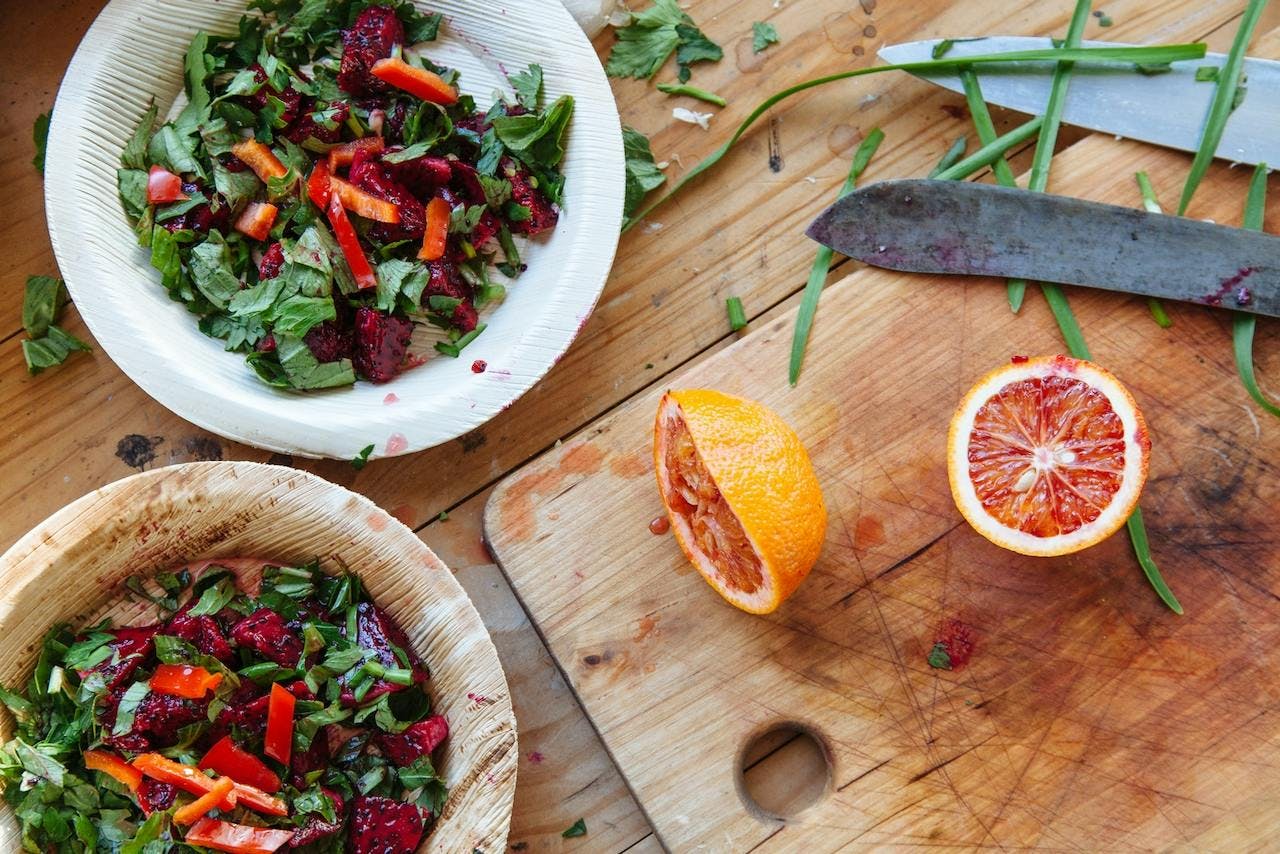Keeping your blood glucose levels (or any health goals for that matter) in check while traveling can be challenging, but only if you’re unprepared.
For most of us, vacation already begins at the airport with sugary coffee drinks and pastries followed by carb-heavy snacks and meals on the plane. Add to that all the stress and disrupted sleep that comes with traveling, and your blood glucose levels are in for a roller coaster.
If you’re getting ready to board a flight to your next holiday destination, there are several things you can do — and the trick is to start the night before.
1. Eat an early dinner and get a full night’s sleep
Poor sleep and later bedtimes are associated with a number of health consequences, including insulin resistance and blood glucose dysregulation the following day — especially if you eat a high-sugar breakfast [1].
Consuming your last meal too close to bedtime can actually disrupt your sleep, as your body has to keep working to digest the food.
This in turn makes it harder for you to fall asleep or enter into a deep sleep, and may even increase levels of cortisol, the stress hormone — which can further reduce your insulin sensitivity and lead to glucose spikes [2].
2. Break your fast closer to lunchtime
Overnight fasting windows of 14 hours have been shown to improve blood glucose and insulin sensitivity, so plan to have your first meal of the day closer to lunchtime [3].
Consuming zero to very low-calorie drinks, such as black coffee, will not break your fast, but skip the syrup-sweetened latte. If you’re not a fan of black coffee, opt for heavy cream or coconut cream — just an ounce (30 mL) will change your coffee’s flavor and texture and is unlikely to break your fast.
Remember, you can bring along your own cream — just be sure it’s under the 3.4-ounce (100-mL) limit if you want to bring it past the security checkpoint.

Recently, I was traveling and opted for a gluten-free meal ahead of time. The breakfast I received was a blood glucose nightmare: two bowls of fruit with dried fruits, apple sauce, a Lärabar (with 20g of sugar per bar), and strawberry jam. Luckily I was prepared with my own breakfast: an oat cup with chia and flax seed, high-quality whey protein powder to mix in, and carrots.
3. Bring your own meals and snacks
As convenient as airline and airport food options are, you don’t have to stick with them.
Airport security measures can make it easy to forget that you’re allowed to bring along your own snacks and meals. As long as the food you bring is solid enough not to be considered a liquid (and you keep all liquids separate and within the size allowances), you can have your own personal stash of healthy choices on hand throughout your flight.
High-fiber snacks (like apples, nuts, beef jerky, hard-boiled eggs, plain popcorn, and carrots with hummus), as well as low-carb low-carb and low-GI meals such as a salad with shredded chicken with olive oil and apple cider vinegar, are great ways to control your blood sugar and stay full for longer.
4. Make sure your first meal contains protein and complex carbs
Your first meal can have a huge impact on your energy levels and blood sugar balance for the rest of the day. Starting the morning with a meal or drink that spikes your blood glucose may lead to an energy crash, leaving you feeling depleted, hungry, and craving more sugar. Aim to consume a well-balanced meal high in protein for satiety, with sufficient fat and fiber to help slow the absorption rate and cause a slow, steady rise in blood glucose [4, 5]. Complex carbs or “slow carbs,” such as whole fruit and vegetables, whole grains, and legumes, have more fiber and nutrients, helping to prevent blood sugar spikes.
5. Make smart airport food choices
If you didn’t get a chance to prepare your own snacks or meals prior to your flight, making smart airport choices can save you from spiking your blood glucose. Keep an eye out for low-carb options, including salads (remove croutons and opt for oil and vinegar instead of sweetened dressings), eggs and bacon, bun-free burgers, and smoothies with minimal fruit (ask for a tablespoon of peanut butter if available to slow glucose absorption).
Key Takeaways
Traveling doesn’t have to be synonymous with blood glucose mayhem. With a bit of preparation and the tips above, you can begin (or end) any vacation on the right foot.
- Have an early dinner the night before and get a full night's rest.
- Delay or skip breakfast (wait at least 14 hours from dinner the night before) and break your fast with a glucose-friendly meal.
- Bring your own food for complete control over your blood sugar levels.
- Make your first meal balanced with protein and complex carbs.
- Be smart with airport food choices, if you can’t bring your own.
Emily Johnson-Haug is an online health and nutrition coach based in Basel, Switzerland, working with clients worldwide to empower them to become their healthiest selves. Emily educates and guides clients toward achieving their personal goals using data- and evidence-based techniques while emphasizing behavior changes, healthy habit creation, and mindset transformation. Recognizing that each client is individual and needs a tailored approach to achieve their goals, Emily, together with her clients, takes the concept of "N=1" or the "study of one" approach conducting experiments together to determine the best unique strategy to achieve greatness. You can learn more about Emily’s work and business (Empowering Health) here.


